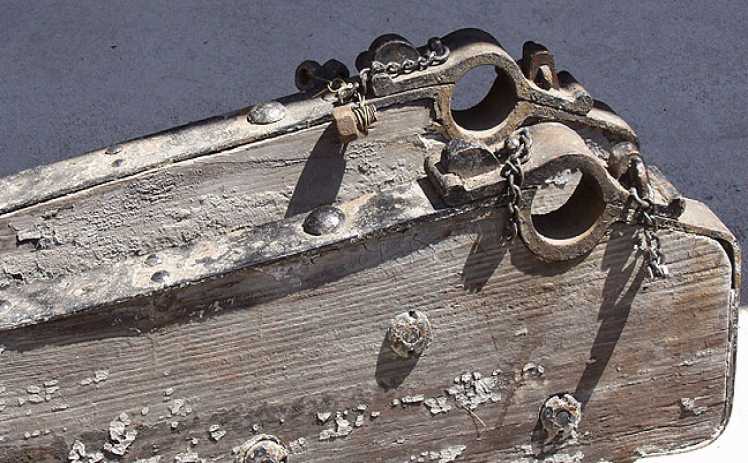Iíll repeat my earlier statement and say that Iím not arguing that this is a Whitworth Co, manufactured carriage, because opinions, even educated opinions canít prove the veracity of an argument, but I will say that nothing that has been said so far seems anywhere near convincing enough to lead to the conclusion that this carriage was not produced by either the Whitworth Company, or another British carriage maker in the 1860ís.
The statement that the cap-squares are ďreplicasĒ of the type used on U.S. Civil War carriages doesnít really make any sense to me, seeing that the vast majority of people writing on this subject make it perfectly clear that it was the U.S. that was derivative of European and British carriages, right up to the time of the Civil War, in fact it really wasnít until a short period of time before the Civil War began, that Americans began to demonstrate some real originality in ordnance design. Iím posting a photo of the cap-squares and straps from an 1860ís Whitworth Co. manufactured field carriage, and I think itís easy to see they are similar to the bronze cap-squares on the naval carriage weíre discussing. In fact if it werenít for the downward cant that follows the angle of the cheeks on the field carriage, these cap-squares would be very close in appearance. Youíll also notice the great similarities of the cap-square keys, key bolts, and chin bolts.
Now, onto trying to identify whether a given piece of metal is bronze or brass via visual inspection (of a photo, no less). This topic has been covered before on this forum, (a few times before) and I think it was GeorgeG that said he didnít think it was that easy a task to make the distinction by eyeballing the metal, and the only sure way was to have the metal analyzed. Well, I agreed with GG then, and I still do, but if I was forced to make a guess, Iíd say the metal on this carriage is bronze. To me, highly polished bronze has a more pale, lighter colored appearance than polished brass, which seems to have a richer more gold looking tone. Someone might ask how much money Iíd be willing to bet on my hunch, and my answer would be that Iíd probably go all the way up to a couple bucks.
ďThe little strips with little screws in them just don't look like English cannon-maker work; at the very least such a strip would be sculptured or radiused and not just a flat strip, unless it was sunk into a groove cut out for the purpose.Ē
Iím not really arguing against the veracity of this pronouncement (I canít), but if this sentence is accurate in its assessments, it certainly displays an advanced degree of knowledge about British naval gun carriage manufacturing in the second half of the 19th century.
Is it a specific book that informed you of the work of English artillery carriage craftsmen of this time period, or is it knowledge acquired through empirical observation? I didnít think that there was a great deal known about Joseph Whitworthís carriage manufacturing.
Anyway, back to the little bronze strips; Iíve looked at them enlarged, and Iím pretty sure that they are inlet into the wood, meaning that the surface of the wood and bronze are flush with each other. As for ďsculpturedĒ or ďradiused,Ē Iím not too clear on what you mean by these terms.
Of course, the reason for these plates were practical, they were intended to prevent wear on the wood from handspikes used in raising the breech of the barrel, but I think Victor has it right, that in this case, its evident that these plates are more decorative than utilitarian.
